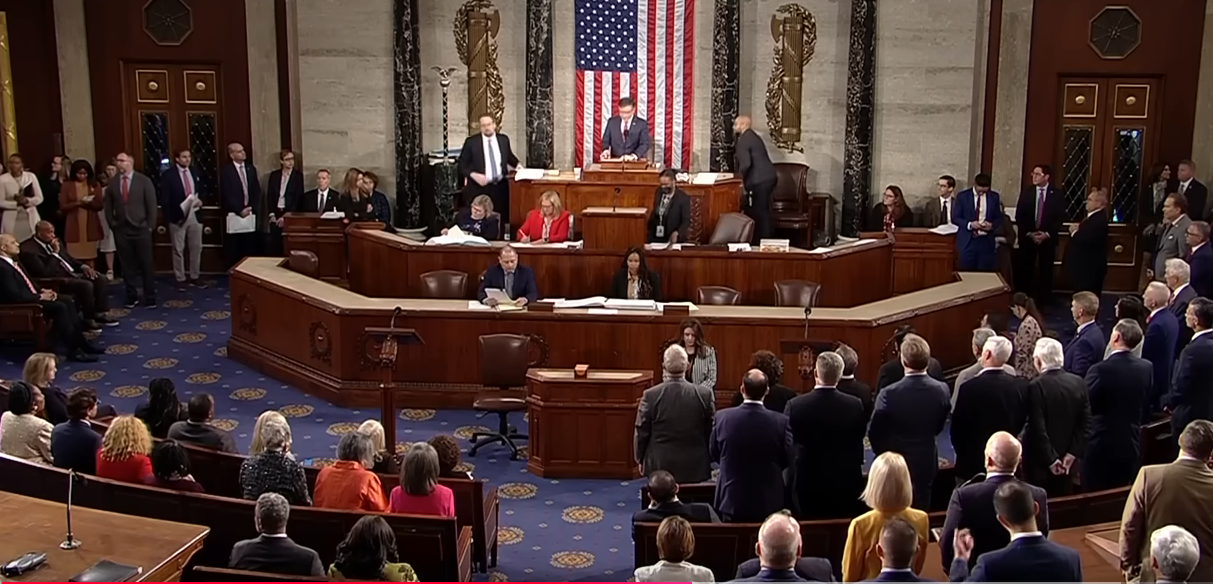Damaged bridge.
[The View From Zimbabwe]
Tropical storm Ana which made a landfall in northern Mozambique on 24 January ripped through the eastern part of southern Africa causing loss of lives, displacement of people and extensive damage to property and infrastructure running in millions of dollars.
In the second half of the 2021 – 2022 summer season, tropical storm – related floods have devastated millions of people in southern Africa – mainly in Madagascar, Mozambique, Malawi, Zimbabwe and parts of Zambia causing loss of life, devastation and destruction.
One of the countries most severely affected has been Mozambique, where more than 45 000 people, including 23 000 women and children are in urgent need of humanitarian aid.
The UN children’s agency, UNICEF and Mozambique’s National Institute for Management and Disaster Risk Reduction were working closely deploying staff and preparing medical and nutrition supplies, water, sanitation and hygiene kits, as well as setting up temporary learning spaces to support children and their families.
Unicef estimates it will need $3.5 million to respond to the immediate needs in Mozambique.
The storm tore through Zambezia, Nampula and Tete provinces, and to a lesser extent Sofala, Niassa and Cabo Delgado provinces in Mozambique affecting more than 45 000 people, killing 18 people, injuring 99 people and damaging several clinics, hospitals, schools, homes, bridges and power infrastructure.
Flooding due to heavy rains and winds in low-lying areas of Mozambique also led to the destruction of vast tracts of croplands and fisheries.
In Malawi, the Department of Disaster Management Affairs (Dodma) said the tropical storm had resulted in the deaths of at least 11 people, 107 injuries and affecting more than 216 000 people.
Many people were displaced and were without power as the floods have impacted a key power station in that country.
In Madagascar, tens of thousands of people have been affected and at least 34 people have died, almost all of them in the capital Antananarivo, where traditional houses collapsed. Others were swept away by landslides.
Tropical storm Ana destroyed at least 105 homes, six school buildings and road infrastructure in Manicaland province in the eastern part of Zimbabwe.
However, no deaths and injuries were recorded in the province despite the destruction caused by floods.
The storm brought heavy rainfall in Zambia without much damage to property and infrastructure compared to Madagascar and Mozambique.
The storm had compounded problems for both Madagascar and Mozambique which were reeling from other humanitarian crises which already required urgent attention and funding—drought in Madagascar and conflict in northern Mozambique.
“This latest storm to hit Mozambique is a blunt reminder that the climate crisis is very much a reality and children are most impacted by climate-related severe weather events,” said Maria Luisa Fornara, UNICEF Representative in Mozambique.
The southern African region is not yet out of the woods. Tropical storm Ana, was the first for the region which normally experiences up to 40 or more cyclones in a rainy season which normally runs from October to April.
The UN Office for the Coordination of Humanitarian Affairs (OCHA) southern Africa said serious concerns persist about the impact of the storm on highly vulnerable populations, already affected by previous natural disasters and the conflict in the northern region and the limited resources available to respond to the unfolding needs.
In addition, another low-pressure system is currently forming in the Indian Ocean close to Madagascar, which might evolve into a severe tropical storm in the next few days.
At this time of year, the north -easterly monsoon of East Africa moves into the region forming a boundary with the easterly winds moving in from the Indian Ocean along the Intertropical Convergence Zone (ITCZ).
Most southern African countries experience most of their seasonal rain from this system. Experts say the bulk of the rains that fall in southern Africa come due to the seasonal shift of the ITCZ coupled with rare and episodic occurrences of cyclone-induced rains.
The ITCZ is described as a zone that encircles the earth and is roughly parallel to the equator. It moves north and south following the sun. The ITCZ brings cyclonic rainfall to Zimbabwe and most other southern African countries during the December-January months.
In the 2019 -2021 rainy season about 13 tropical cyclones formed in the south-west Indian Ocean and only three made landfall on the southern African sub-continent.
Southern African countries are bearing the impact of climate change caused by polluting industrialized countries.
In the past few years, the countries have been repeatedly struck by severe storms and cyclones which have killed people, destroyed infrastructure and displaced large numbers of people.
Experts say the storms have become stronger as waters have warmed due to climate change, while rising sea levels have made low-lying coastal areas vulnerable.
Drought and extreme rainfall have surged in the SADC region and are now occurring at a rate five times higher than in 1980, according to a study by the Southern African Research and Documentation Centre (SARDC).
Tropical Cyclone Idai, the worst in more than 50 years, brought heavy rainfall and strong winds to Malawi, Mozambique and Zimbabwe between March 5 and 19, 2019, causing severe flooding which led to loss of lives, destruction of infrastructure, disruption of livelihoods and destruction of crops.
It is estimated that close to 780 000ha of croplands in the three countries were destroyed by the cyclone, with the majority of this area being in Mozambique.
Dams and wells were also damaged, and livestock were washed away. SADC launched a US$323 million appeal to support the disaster response and recovery efforts related to Tropical Cyclone Idai impacts.
Southern Africa is at the peak of its rainy season and fears abound that the situation could deteriorate quickly if another tropical depression or cyclone brings additional rains.
Myrtha Kaulard, UN Resident Coordinator in Mozambique – the top UN humanitarian official in the country – was quoted saying that the storm highlighted the need for investment to mitigate against climate change.
“This is the first climatic event of this rainy and cyclonic season, but the vulnerabilities are extremely, extremely high because we have this yearly cycle of extremely heavy destructive rains and cyclones. People simply do not have time to recover,” she said.
Black Star News columnist Sifelani Tsiko is a veteran journalist based in Harare [email protected]






